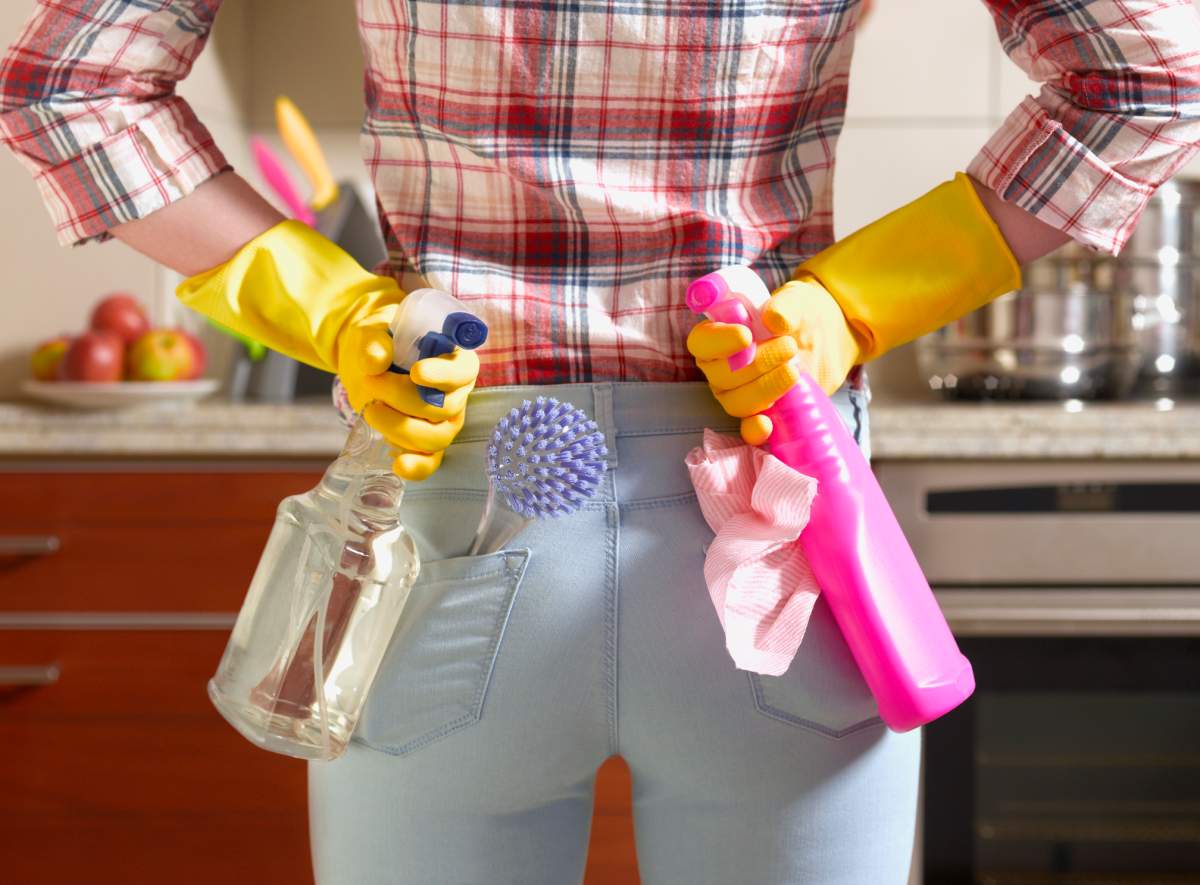Spring is here and that means it’s time to give your house a good cleaning and throw away all the clutter you’ve accumulated over the past year. But how do you know if you’re getting rid of the right things at the right time, or are cleaning your remaining possessions properly?

READ MORE: Your washing machine may be harbouring bacteria – here’s how to clean it
It can sometimes be a tough call, and sometimes you may not even know that some of the items you have in your home do — in fact — have expiry dates. And by not changing them every so often, you leave you and your home open to buildups of bacteria, fungi and other pathogens, all of which have the potential to make you sick.
From your kitchen to your bedroom, here are the nine household items you need to throw away or clean, and when, according to Canadian microbiologist Jason Tetro.
1. Toothbrush
According to Tetro, your toothbrush should be changed every month.
This bacteria, he says, can cause bad breath. And if you don’t put the lid down on your toilet and flush, you risk potential growth of fecal coliforms as well.
2. Bath towels
“Bath towels you want to be washing on a regular basis – usually every two weeks,” Tetro advises. “But you probably want to change them about once a year.”
What ends up happening, he says, is that you end up losing the piles that allow you to dry and they become less effective.
“What happens, as well, is bacteria, like on your body and maybe fungi that can cause dandruff and dermatitis, could potentially get in there,” Tetro says. “And if you’re not washing with very hot water, they may tend to grow and potentially re-infect you when you’re drying off.”
3. Water filters

Get weekly health news
Water filters, like those found in Brita products, need to be changed every three months, Tetro says.
“They are great for removing contaminants but they’re not great for killing bugs,” he says. “So bacteria that are coming from the water supply can actually grow in the Brita filter.”
Tetro explains that in some distribution systems, there are “opportunistic pathogens,” and if they are allowed to grow, then there’s a significant likelihood that you may end up with gastrointestinal problems.
4. Kitchen sponge
“Kitchen sponges are the germiest item in the home,” Tetro says. “You can normally clean it on a regular basis by keeping it damp and microwaving it for two minutes. But over time, the efficiency of the sponge to be able to clean goes down. So instead of just being able to clean, you may also be depositing much like the toothbrush.”
What you’ll want to do, he says, is get a new sponge every month.
5. Plastic containers
Changing your plastic containers comes down to it being more about chemical safety than fighting microbes, Tetro says.
“The plastic themselves can come off,” he explains. “So the idea of microplastics and other particles from the containers getting into your food and then getting into you, obviously is not a good thing.”
READ MORE: Reality check: Are hand dryers in public bathrooms full of bacteria and fungi?
So if you’re just using these containers about once a week, Tetro says change them every six months. If you’re using them every day, then you’ll want to change them once every season.
6. Disinfectants
People don’t realize that disinfectants have a shelf life, Tetro says.
Often in healthcare, the shelf life of cleaning products is about one month due to being high level and acting. For the home, however, you can get away with three months.
“Of course you should be cleaning often enough that your cleaning products wouldn’t actually last you three months,” he says. “But that’s just me.”
7. Mattress cover
“Most people think that when they sweat when they’re sleeping that it goes into the sheet – and it does, but it usually goes below the sheet and so we have mattress covers that will help protect the mattress,” Tetro says. “So eventually a mattress cover is going to become contaminated with microbes.”
Now, he adds, you can wash the mattress cover once every three months. However, over time, it’s going to lose its ability to hold on to the pathogens and they will eventually get into the mattress. So change your mattress cover every year, Tetro says.
8. Pillows
Pillows, Tetro says, are like kitchen sponges in the sense that they love to hold in all sorts of fungi, bacteria and mites.
The general rule is that if you can wash it, then wash it every three months. But if you can’t, Tetro says to replace your pillows every six months to a year.
9. Slippers
If you’re wearing socks with your slippers, then Tetro says there’s nothing to worry about.
But if you wear your slippers barefoot, then that’s when your slippers will need to be thrown out at a certain point.
This will cause your feet to smell. And since there’s potential for fungi to grow, this could potentially lead to infections.
If you’re able to wash your slippers, Tetro says to do that once a month. If not, then replace them every six months.








Comments